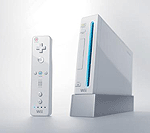Sony released its highly anticipated PlayStation 3 last week and was
met with overwhelming demand despite selling the consoles for
as much as $599. iSuppli, a technology-research company based in
California, took apart the PlayStation 3 to estimate how much it
cost to make. What did they find? Even with the high price tag, Sony
will be losing close to $240 for each console sold, due to specialized
components used. WSJ.com (subscription required) has an interesting Q&A
with iSuppli’s Andrew Rassweiler, who talks about the take
part / estimation process:
So what does the PlayStation 3 look like on the inside?
It looks very much like some of the Apple devices we’ve taken apart. There is a lot going on in there; it’s almost a supercomputer. The motherboard has so much silicon on it, with so much heat coming off of it, that they had to make a custom enclosure to draw heat off the chips. That means the motherboard is caged in its own monstrous custom cooling cage, which is something we had never seen before. There is also a large-diameter fan, the likes of which we have never seen. It’s much bigger than the fan in your PC.
Why does the PlayStation 3 remind you of an Apple product?
Apple pushes the design envelope, in that they try to pack as much into as little space as possible. The PlayStation 3 employs a lot of the same tricks and techniques, in that they have packed a lot of power into this box. For example, the new Xbox 360 has an external power supply that is 200 watts. But the PlayStation 3 has a 400-watt power supply, but it’s internal. So in addition to the motherboard with all those chips, they’ve also jammed a high-density power supply, something that also creates its own heat. All that requires some very clever engineering. By comparison, the Xbox 360 felt like a PC motherboard.
Did it look like anything you had seen before?
We have been doing this for four years, and during all that time, we have only seen three chips with [an input/output] count of more than 1,200. But the PlayStation 3 has three such chips all by itself. These input/output locations are the places where the chip is soldered to the motherboard; they are how the chip communicates with the outside world, and their number is a good benchmark for the chip’s complexity. That means the silicon chips inside the PlayStation 3 have more than 1,200 small bumps on their bottom side, even though the chips measure just an inch and a half by an inch and a half.
Even though console makers such as Sony usually make their money on game royalties, rather than hardware, $240 is a lot of money to lose on each unit. Have you ever seen a gap between price tag and production cost that is so big?
No. But remember, you have a relatively long life cycle in games, so you’ve really got to shoot for the bleeding edge if you want your product to be relevant over a four-year life span. As a result, you end up using new technologies that tend to be more expensive upfront. But if we were to redo this analysis a year from now, it will be very different. When we did the Xbox 360 a year ago, we said it cost them $550 to make, compared to a price tag of $500. Now the same box a year later costs about $325 to make.
What is it like to actually play games on the PlayStation 3?
We didn’t have any time to play. The first thing we did when we opened the box is take a screwdriver to it.
